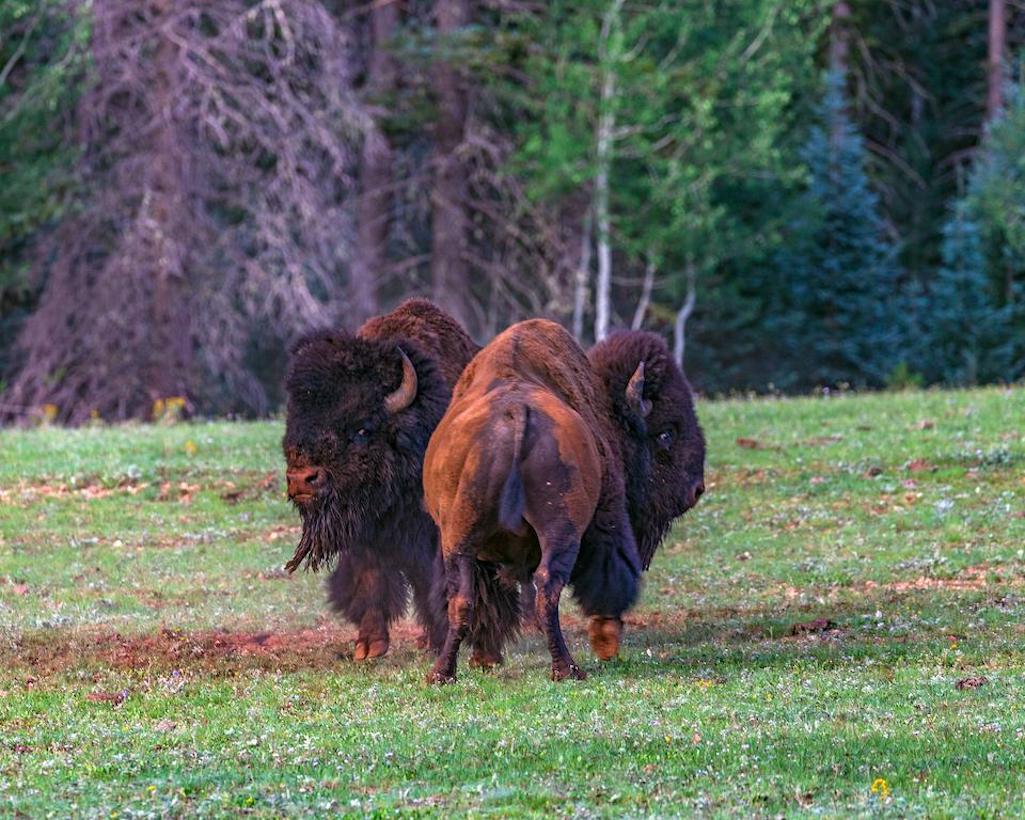
More than 40 bison have been removed from the North Rim of Grand Canyon National Park/Rebecca Latson file
More than 40 bison have been removed this fall from the North Rim of Grand Canyon National Park, where the size of the resident herd has been growing uncontrolled.
In total, 36 bison were removed through live capture and transfer and five were removed lethally, reducing the impacts of the herd on the park’s water, vegetation, soils, and culturally significant sites and locations, a park release said Wednesday.
In 2021, through a partnership with the InterTribal Buffalo Council, 13 bison were transferred to the Santee Sioux Nation of Nebraska and 23 were transferred to the Cherokee Nation of Oklahoma. Since the park began transferring bison to tribal partners in 2019, 124 bison have been relocated to six tribes in four states through the ITBC.
Even with the success of the live capture and transfer program, lethal removal remained a necessary tool to disperse and move the herd to protect the park's sensitive resources. Through partnership with the Arizona Game and Fish Department, this year, a total of five bison were culled from the Kaibab Plateau herd by highly skilled volunteers.
Bison meat and culturally significant parts of bison were donated to three federally-recognized tribes traditionally associated with the Grand Canyon. While planning for additional reduction operations are underway, park staff are developing an agreement with all 11 traditionally associated tribes to conduct joint-lethal removal operations in the future.
The 2021 lethal removal program, using skilled volunteers, ended in late October and achieved the important objective of making the park less of a refuge for bison, encouraging them to move more widely across the landscape.
“I am extremely proud of this team who has worked tirelessly on this complex and important resource management challenge,” said Grand Canyon Superintendent Ed Keable. “Their commitment will have lasting impacts to the natural and cultural resources on the North Rim well into the future.”
In 2014, the NPS initiated a science-based planning process to manage bison overpopulation at Grand Canyon National Park. In 2017, using the best science available and working closely with the public and American Indian tribes, the park finalized the Initial Bison Herd Reduction Plan to reduce the herd from 600 to fewer than 200 bison using live capture and transfer, as well as limited lethal removal. The 2020-2021 winter population estimate for the herd is approximately 400 animals.



Add comment